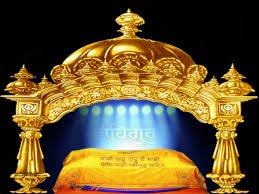Clarifying the Position of Guru Granth Sahib from the Viewpoint of Sikhs of Khalsa

Since the position of the holy book (Guru Granth sahib) is of a great importance for the Sikhs of Khalsa, this thesis aims at surveying three significant problems in this
Abstract:
Since the position of the holy book (Guru Granth sahib) is of a great importance for the Sikhs of Khalsa, this thesis aims at surveying three significant problems in this regard. Therefore, issues like content, structure and position of Guru Granth sahib are to be discussed.
Structurally, the book starts with Guru Nanak, s Japji and continues with Sodar Rehras and Kirtan Sohila. Guru Granth consists of 31 ragas including hymns like Shabad and chhand, each one with its special features. Six different languages, all in Punjabi (Gurmukhi) script, have been utilized in Guru Granth, a mystical and ethical text regarding the style, in which several hymns have been composed by many saints in praise of God. Guru Angad (the second Guru) collected these writings as well as those of Guru Nanak, not compiling them as a book. Finally, Guru Arjan (the fifth Guru) put this Mohan Pothis in a certain formation.
For Sikhs of Khalsa, the position of Guru Granth is as high as a living Guru rather than a book. From a non-religious point of view such a consideration is an extremist approach towards Gurus that has been regarded as returning to idolatry and complicated rituals, while one of the messages of Sikh Gurus, specially Nanak, is to avoid these rituals. But from a religious point of view Guru has a higher position, his words being the only embodiment of God, and these rituals are just a respect to these words while the holy book is a medium of discourse. However this extremism could not be neglected, as it is one the criticisms raised against the Sikhs of Khalsa by Nirankari sect, resulting in their divergence.
Key words: Guru, Bhakti, Sufi, Shabad, Gurbani, bhagat Bani
